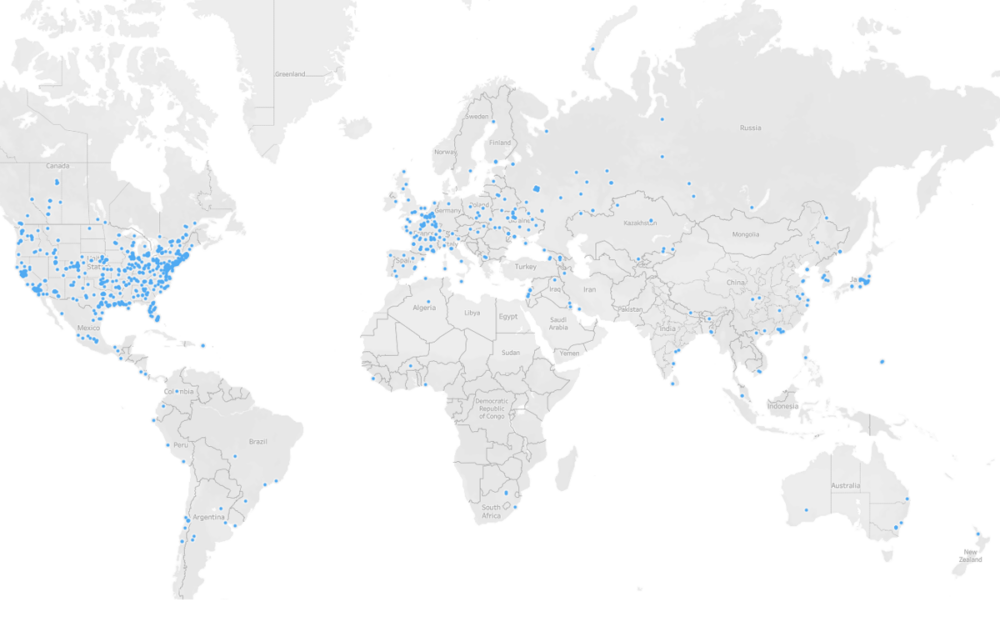
Laura S. H. Holgate Ambassador (ret.)
Vice President, Materials Risk Management
Thank you very much, and a special thanks to Government of France for hosting the Global Partnership Working Group meeting and dedicating a session on radioactive sources. It’s an honor to join you today, especially in Paris, and represent the Nuclear Threat Initiative alongside all the prestigious participants represented in the Nuclear and Radiological Security Working Group.
International organizations and the global non-governmental community have played a major role in strengthening radiological security worldwide. They provide governments and leaders with data-driven assessments of progress in global radiological security, analysis of gaps in the current security architecture, and important recommendations on how to reduce or even eliminate radiological risks. I’d like to focus my brief remarks today on ways that NTI is working to sustain progress on securing and eliminating dangerous radioactive material and how we can work together to mitigate those risks.
Sustaining progress on securing and eliminating dangerous radioactive material requires the proper management of sources throughout their lifecycle—from the moment the sources are being chosen, and the security systems that protect them, to the proper disposal at the end of their lifecycle. But a security regime cannot be sustained by laws, regulations, and equipment alone. Of equal importance are the enduring institutions, regional platforms, and human resources that promote capacity building and establish strong radiological security culture programs, at the national and site levels. These elements form the key attributes of an effective radiological security framework and its success is ultimately dependent on cooperation at all levels – policy makers, regulators, managers, individual employees and, to a large extent, public-private partnerships. These partnerships provide greater assurance that the entire radiological security system will successfully prevent, detect, and respond to malicious acts involving radioactive material.
In our efforts to strengthen and sustain these partnerships, NTI has adopted a strategic approach that leverages our unique convening power, expertise, influence, reputation, and track record to raise awareness, strengthen standards, improve implementation, increase transparency, promote accountability, and advance commercial incentives for radiological security. In some cases, direct action can provide the fulcrum for applying that leverage to enlarge its impact or transfer responsibility to sustainable platforms. In other cases, NTI’s voice and resources can augment and strengthen actions by national or international agencies, such as the IAEA.
Now let me briefly highlight several key NTI radiological program efforts in support of these objectives:
First, we are finding creative ways to raise awareness of radiological threats through our advocacy, convening authority, analytical reports, workshops, speaking engagements and other information resources.
NTI actively conducts press outreach, supports legislative actions, and engages in private-public partnerships to raise awareness about the risks posed by radiological materials and to promote the availability of effective alternative x-ray technologies. One recent example is the launch of our new NTI radiological website. This information portal serves as a repository of educational and technical documents for hospitals and researchers considering replacing their cesium irradiators with alternative technologies. I would encourage all of you to page through it, and as always, we are open to additional comments and information that will be useful to various stakeholders.
Secondly, we are defining concrete actions to mitigate or eliminate radiological risks through advances in alternative technology and engaging stakeholders to urge implementation.
To increase resilience and promote sustainable security, the total amount of radiological material in circulation should be decreased. An important way to reduce radiological material in circulation is to replace sources, whenever possible, with effective and equivalent alternative technologies.
In support of this objective and of related U.S. government programs, NTI is working with hospitals and universities across the United States to encourage the replacement of Cesium-137 blood and research irradiators with effective alternative technologies. Our strategic partnerships with New York City, California, and Atlanta have resulted in concrete actions to replace cesium research and blood irradiator devices. To date, 70 percent of cesium users in NYC have agreed to replace their devices, 90 percent within the University of California system, and 100 percent at Emory University in Atlanta. We are in the process of publishing a report that explains the risks associated with Cesium-137, describes the safe and effective alternative technologies available, and offers lessons-learned from cities and university-wide systems that are embracing the decision to phase out the use of Cesium-137.
We have also highlighted case studies of successful actions on alternative technologies taken by other countries – such as France, Japan, and Norway – sharing lessons learned, understanding barriers, addressing concerns, and creating models that can be applied more broadly. Ultimately replacing these radiological sources with available and effective alternative technologies is the best way to achieve permanent threat reduction.
We are planning to expand our advocacy on alternative technologies for different applications and promote the transition away from Cobalt-60 teletherapy devices. We are exploring the possibility of sponsoring a workshop in Africa on this topic in 2020.
Third, we are identifying gaps in global and regional radiological security efforts to prevent, detect, and mitigate high-consequence radiological events and are encouraging governments and other responsible stakeholders to fill them.
In 2016, NTI published a Radiological Security Progress Report which tracked how countries were fulfilling their pledges in the Nuclear Security Summit process to ensure effective, sustainable security for radiological sources. We have also advocated for a more effective system for securing radioactive material and the universal adherence to the IAEA Code of Conduct and its Supplemental Guidance, as well as communications through the IAEA’s Information Circular Process – such as INFCIRC/910 introduced by France on “Strengthening the Security of High Activity Sealed Radioactive Sources.”
NTI also played a contributing role (both in the planning of the conference as well as the conference itself) at the December 2018 IAEA International Conference on the Security of Radioactive Material: The Way Forward for Prevention and Detection. Over 700 participants from more than 100 countries attended, including representatives from the private sector, non-governmental organizations, professional societies, and academic institutions. NTI’s advocacy for the involvement of stakeholders outside of government has brought a diverse community together to share experiences and technology solutions. More importantly, it has brought increased recognition that the private sector is an integral supporter of and contributor to global radiological security efforts.
Looking forward, we are evaluating the possibility of adding a new ranking or analysis on radiological security to the fifth edition of the Nuclear Security Index, which is due to be published in 2020. We plan to engage with an expanded International Panel of Experts and the Economist Intelligence Unit to determine which relevant public data sources are available to gauge radiological security conditions across 196 countries, drawing, where applicable, on the nuclear security framework.
Lastly, we are establishing ways to promote regional and sustainable models of cooperation
In partnership with the Moscow-based Center for Energy and Security Studies (CENESS), NTI organized two major regional workshops in Central Asia (Astana and Bishkek). These workshops brought together key stakeholders from across this region to share best practices, as well as major donors and recipients in the region to coordinate efforts and to discuss how to improve regional coordination on radiological security in Central Asia. This model provided a unique forum for networking, sharing best practices, and improving coordination on radiological security which we shared with you during the last Global Partnership meeting. Since our last meeting, NTI published a conference report – Sustainable Security of Radioactive Sources in Central Asia – and co-sponsored an IAEA Side Event at the December conference that highlighted the success of our efforts to promote regional cooperation in Central Asia on this issue.
NTI believes that this workshop model is sustainable at the regional level and at the international level, as well as replicable in other geographic regions. This year we are planning to hold a similar conference in Mexico on radioactive material security that will involve regional players in Central America.
In conclusion:
We must stay vigilant in pushing the radiological security agenda forward and NTI will continue to shine a light on the work countries are doing and use our convening authority to help governments and experts fertilize new ideas.
As the threat of radiological terrorism persists, cooperative and inclusive engagement must remain a high priority for governments, industry, and civil society – from the boardroom to the blood bank. NTI looks forward to working with all of you to identify practical and sustainable actions that will make the world safer from radiological terrorism.
Thank You.
Sign up for our newsletter to get the latest on nuclear and biological threats.
“The bottom line is that the countries and areas with the greatest responsibility for protecting the world from a catastrophic act of nuclear terrorism are derelict in their duty,” the 2023 NTI Index reports.
The only public database of its kind, includes global nuclear & radiological security trends, findings, policy recommendations, and interactive visualizations.
Archives of Global Incidents and Trafficking Database, 2013-2018. (CNS)

